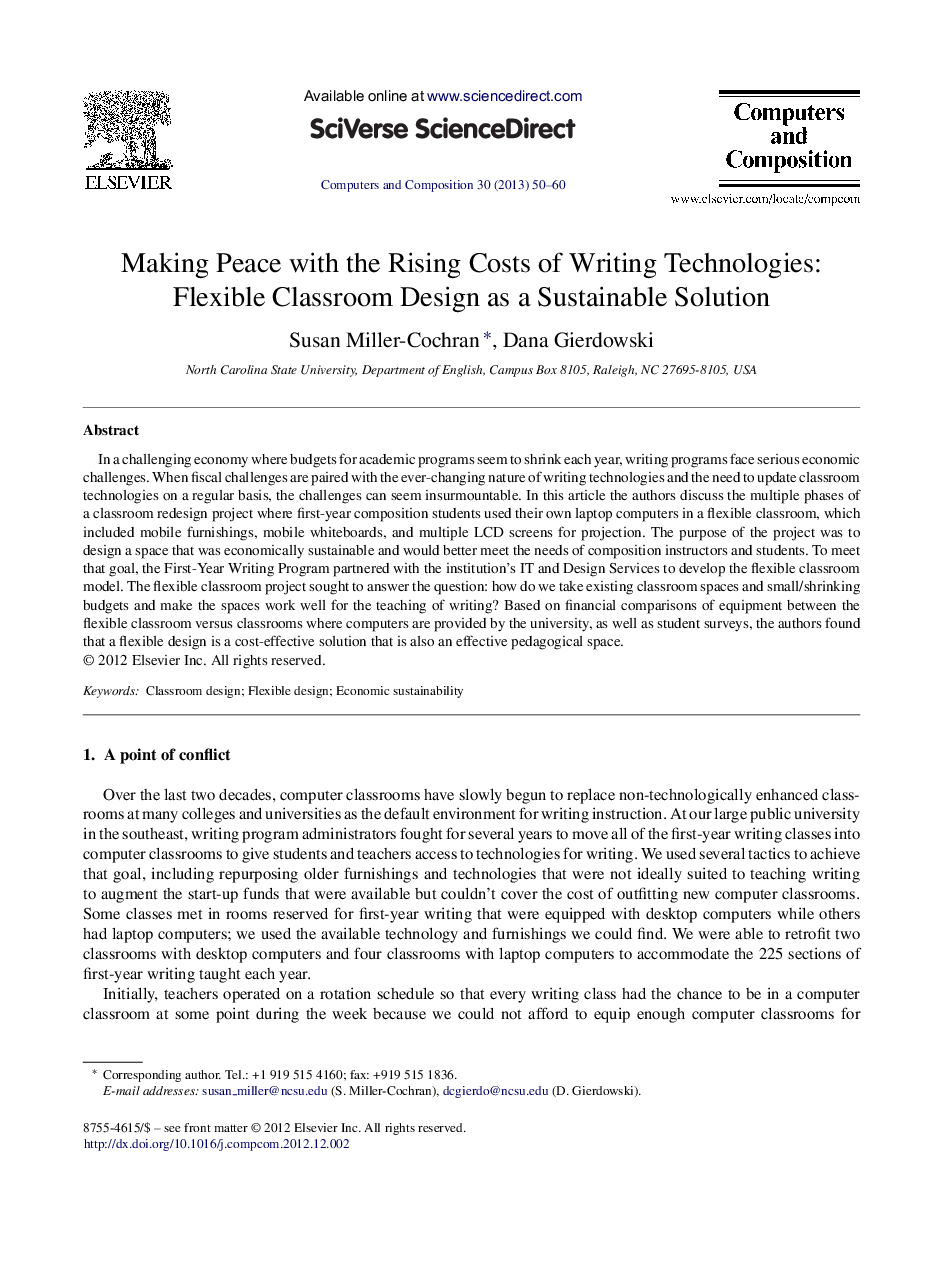| Article ID | Journal | Published Year | Pages | File Type |
|---|---|---|---|---|
| 347789 | Computers and Composition | 2013 | 11 Pages |
In a challenging economy where budgets for academic programs seem to shrink each year, writing programs face serious economic challenges. When fiscal challenges are paired with the ever-changing nature of writing technologies and the need to update classroom technologies on a regular basis, the challenges can seem insurmountable. In this article the authors discuss the multiple phases of a classroom redesign project where first-year composition students used their own laptop computers in a flexible classroom, which included mobile furnishings, mobile whiteboards, and multiple LCD screens for projection. The purpose of the project was to design a space that was economically sustainable and would better meet the needs of composition instructors and students. To meet that goal, the First-Year Writing Program partnered with the institution's IT and Design Services to develop the flexible classroom model. The flexible classroom project sought to answer the question: how do we take existing classroom spaces and small/shrinking budgets and make the spaces work well for the teaching of writing? Based on financial comparisons of equipment between the flexible classroom versus classrooms where computers are provided by the university, as well as student surveys, the authors found that a flexible design is a cost-effective solution that is also an effective pedagogical space.
► Phases of a classroom design project in a first-year writing program are discussed. ► Costs of a flexible room design are outlined and compared to other room layouts. ► Survey results suggest students believe a flexible room impacts their learning. ► The flexible room model is more cost-effective than rooms with fixed designs.
